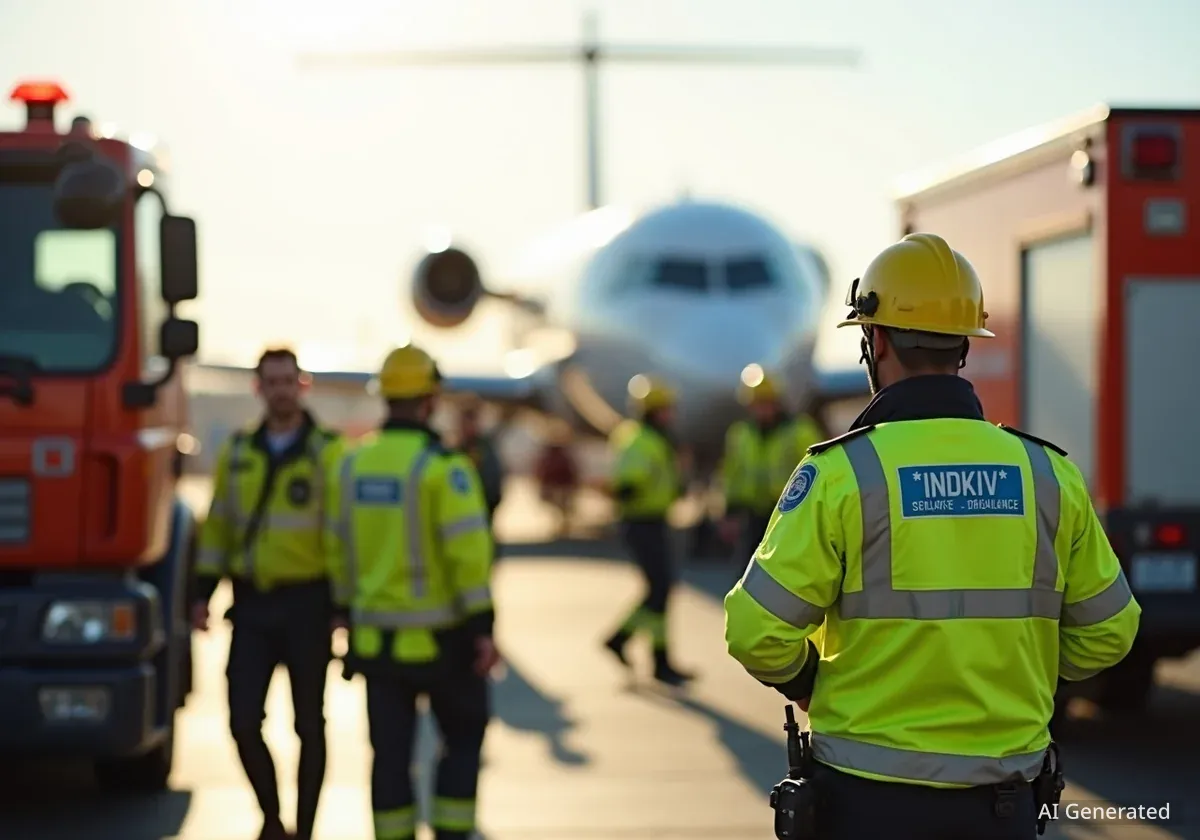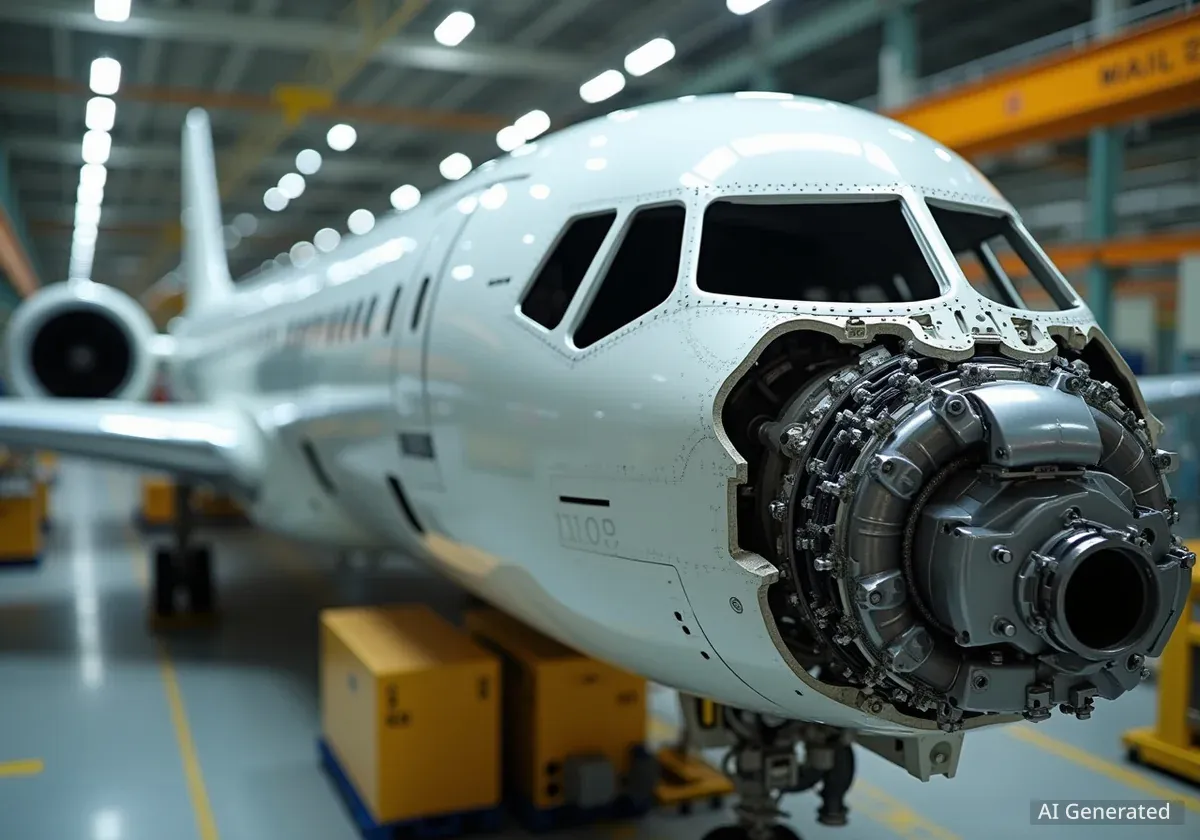Nashville International Airport (BNA) is facing significant safety challenges due to a severe shortage of air traffic controllers and reliance on outdated control systems. Experts warn that these issues create high risks, especially as air traffic reaches record levels. A recent near-miss involving an American Airlines flight highlights the ongoing concerns at the airport.
Key Takeaways
- Nashville Airport's air traffic control tower has fewer certified controllers than in 2015.
- Staffing levels often fall below federal minimums for each shift.
- The current control tower, built in 1982, has known visibility problems.
- Record air traffic and expanded airspace increase controller workload.
- These issues can lead to flight delays, cancellations, and increased safety risks for passengers.
Persistent Staffing Shortages Impact Operations
Nashville International Airport's control tower operates with approximately 30 certified air traffic controllers. This number frequently falls short of the Federal Aviation Administration (FAA) requirement of 12 controllers per shift. The airport currently has fewer certified controllers than it did in 2015, despite a nationwide effort by the FAA to hire more staff.
The shortage has led to a demanding work environment. Reports indicate a culture heavily reliant on overtime, which contributes to burnout among controllers. On average, staffing levels are eleven controllers below FAA minimums. This situation creates stress and increases the workload for the existing team.
Airport Snapshot: Nashville International (BNA)
- IATA Code: BNA
- City: Nashville, Tennessee
- Elevation: 599 feet
- Status: Major Domestic Airport
Aging Infrastructure and Increased Airspace
The current air traffic control tower at BNA was constructed in 1982. This structure is known for its visibility issues, which create blind spots for controllers. A project to replace the tower is underway, with an estimated cost between $12.5 million and $25 million. However, such large-scale infrastructure projects require significant time to complete.
Adding to the pressure, Nashville's airspace has recently expanded by five miles. This expansion, combined with record-high traffic levels, means controllers at BNA have more responsibility and more aircraft to manage than ever before. The combination of understaffing, outdated equipment, and increased operational demands creates a challenging environment.
"It's like a ticking time bomb. Sooner or later, something has to go wrong."
Impact on Airlines and Passengers
The chronic shortage of controllers and the use of older technology at BNA directly affect airline operations. Airlines face tighter operating constraints, which can lead to more ground-delay programs and increased miles-in-trail requirements from the FAA. These measures force airlines to adjust their schedules, use additional reserve crews, and consume fuel less efficiently.
Such operational disruptions increase costs for airlines. They also negatively impact key performance indicators like on-time arrivals and flight completion rates, especially during severe weather. For passengers, this translates to greater variability in travel plans.
Passenger Experience Concerns
- Occasional go-arounds during landing procedures.
- Longer taxi times on the runway or holding patterns in the air.
- Rolling delays that affect departure and arrival times.
- Increased risk of missed connections.
- Limited options for same-day rebooking if flights are canceled or heavily delayed.
From a passenger safety perspective, the concerns are significant. As air traffic volume grows, the margin for error decreases. Lower staffing levels in air traffic control towers directly contribute to these safety risks. In the short term, airlines may choose to adjust flight schedules and reduce peak flight operations to mitigate some of these issues.
The Role of Air Traffic Control
Air traffic controllers manage the flow of aircraft in designated airspace and on the ground. They prevent collisions, organize and expedite air traffic, and provide pilots with essential information. This work requires intense focus and specialized training, making adequate staffing crucial for safety.
Finding Solutions for Air Traffic Control Challenges
Addressing the issues at Nashville International Airport requires a multi-faceted approach. Airlines and passengers both depend on reliable and safe control tower operations. Resolving the staffing and technology problems is critical for future air travel.
A primary solution involves the Federal Aviation Administration focusing on hiring and training qualified air traffic controllers as quickly as possible. The training process for new controllers can take several years, making immediate action essential. Beyond hiring, improving the quality of life for current controllers is also important.
Improving Controller Retention and Recruitment
One major challenge in the air traffic control profession is the stressful work environment. This stress is often not matched by competitive financial compensation or other benefits. This situation discourages many young professionals from pursuing the extensive training required to become an air traffic controller. Improved compensation packages and benefits could make the profession more attractive.
Investing in modern technology and accelerating the replacement of outdated infrastructure, such as the BNA control tower, will also enhance safety and operational efficiency. These long-term investments are vital for supporting the growing demands of air travel and ensuring the safety of passengers and flight crews.
Overall, a combination of increased recruitment, better working conditions, and modern infrastructure is needed to resolve the ongoing safety and operational challenges at Nashville International Airport and similar facilities nationwide.





